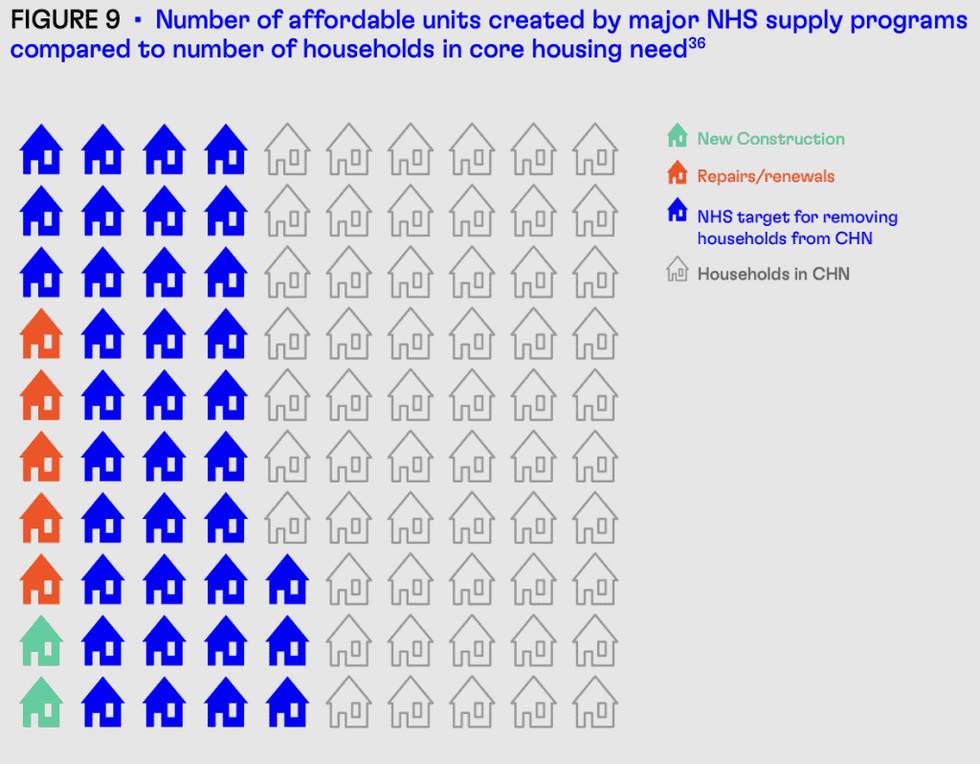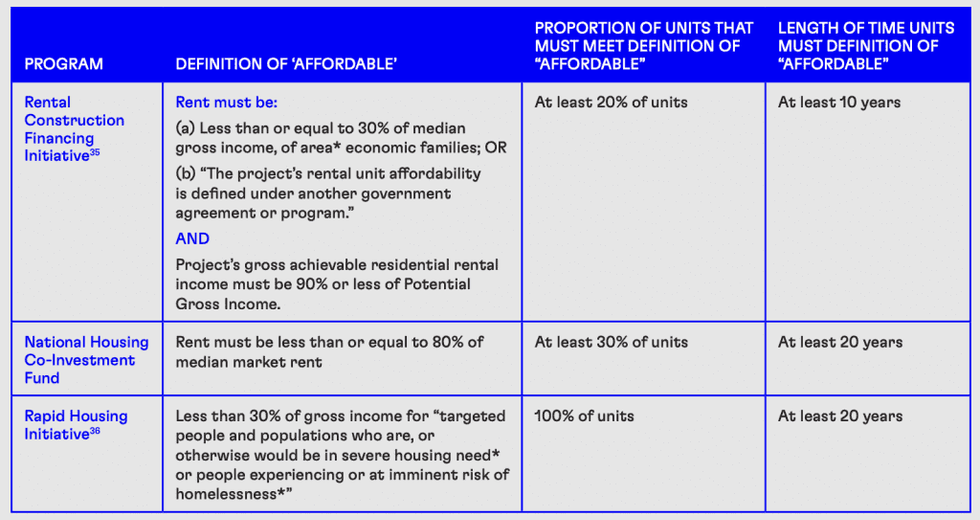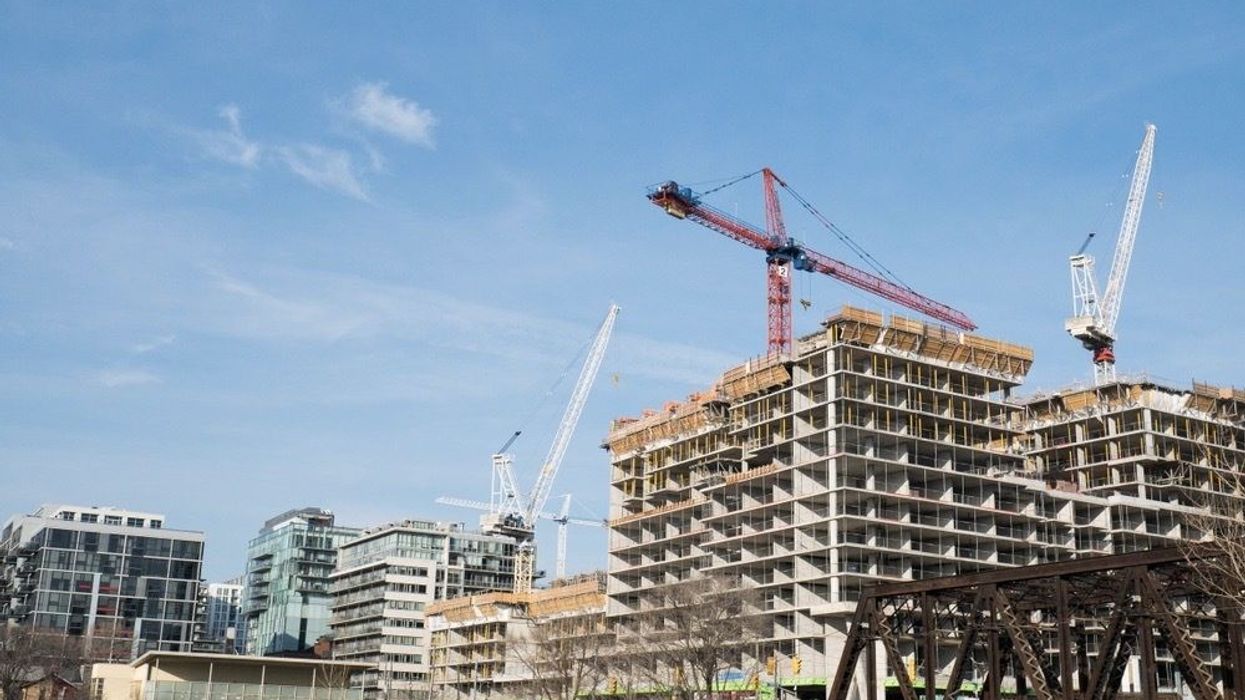Federal government programs designed to create more affordable rental housing have done little to lift low-income Canadians out of housing need, a newly released National Housing Strategy (NHS) report reveals.
The February 4 report, released to the public on Monday, marks the first research report produced by the National Housing Council (NHC) since its launch in 2017. It focused on the effect -- or lack thereof -- of three major affordable rental housing initiatives created under the NHS: the Rental Construction Financing Initiative (RCF), the National Housing Co-Investment Fund (NHCF), and the Rapid Housing Initiative (RHI). These three programs alone make up more than half of NHS's topline commitment as well as most of the funding for increasing rental supply in Canada.
READ: Feds Announce $10M to House Underpriviledged Black Families in the GTA
Thousands of households, particularly vulnerable groups like homeless individuals, women and children fleeing domestic violence, seniors, people with disabilities, racialized groups, Indigenous peoples, and newcomers, could be left behind under the current Liberal government's plans, the report says. As is, the initiatives will "fall well short" of NHS' goal to lift 530,000 households out of core housing need.

What Exactly is "Affordable"?
The three federal program are set to of create 34,900 new affordable rental units -- the bulk of which fall under the RCF initiative -- and repair approximately 60,700 existing units. To date, 26,500 affordable units have been built, and just under 55,000 units repaired.
Despite all of these new seemingly affordable units becoming available, they aren't necessarily meeting the needs of the country's most vulnerable. This, the report points out, is largely due to how these programs define "affordable." The definitions within each initiative vary greatly from one another and often do not meet the NHS definition. In fact, the affordability criteria used by RCF "regularly produces units with rents well in excess of average market rent in their areas," the report says. Less than 40% of RCF units have the ability to lift middle-income households out of housing need, and almost none could lift out low-income households or lone-parent families. The issue, particularly with RCF's affordability criterion, is that it's calculated based on the median income of families and not households.
"This distinction is important: while households include single people living with roommates and those living alone, census families include only households led by married or common-law couples or lone-parent households," the report reads. "The difference in median household income between those in census families and those who are not is substantial: in 2019, the median family household in Canada earned $90,390 before-tax, while the median household not in a census family earned only $31,150."

The median income calculation also includes data from both renters and owners, which NHS says poses an additional problem as renter households are typically lower income than owners in most areas. The RCF program also does not factor in the size of the unit being rented.
"For instance, if the median household income of area families were $70,000 annually, a studio apartment with a monthly rent of $1,750 would be considered ‘affordable’ by the RCF, while a three-bedroom home with a monthly rent of $2000 would not," the report reads.
On the other hand, the NHCF initiative does allow affordability criteria to vary by unit size, but the NHC still found that just half of NHCF units could lift families and unattached people out of housing need, and about one-third could lift out low-income households.
RHI, the report says, is the only program that appears likely to produce rents that will meet the needs of low-income households and reduce core housing need. Unlike the other programs, it considers personal income rather than household income, and renters of these units cannot be charged rent that's any higher than 30% of their income.
Too Little Funding is Going Toward New Supply
Housing affordability has plagued communities all across Canada, with Prime Minister Justin Trudeau laying out several mandates in his December letter to Housing Minister Ahmed Hussen. These mandates are largely focused on reducing the continually soaring price of housing and include moves such as reexamining down payment requirements for investment property, an anti-flipping tax on residential properties held for less than 12 months, a temporary ban on foreign buyers of non-recreational residential property, and preventing renovictions.
"Everyone deserves a safe and affordable place to call home, and for that to happen, we need to build more homes, faster," Hussen said following the February 24 National Housing Supply Summit. "Since 2015, our government has helped house more than 2 million Canadians through new builds, repairs, renovations, and rental subsidies."
To appropriately address the issue of rental affordability, the NHS report calls for adjustments to be made to program designs, or for funds to be reallocated to programs that effectively target core housing need as a means for the government to reach its housing targets.
"RCF’s supply effects do not appear to put downward pressure on rents, since very few units produced have rents below average market rent," the report reads. "Other programs appear to have greater potential to produce new housing that is affordable to those in need; however, the RHI has received comparatively little funding, and the majority of NHCF funding has been committed to repairs. Given the weight placed on the program in the NHS portfolio, reallocating funds away from the RCF toward programs better suited to producing units that are affordable to low-income households, or adjusting program design to better target those in need, has the potential to improve the government’s ability to meet its targets and advance the right to housing."





















